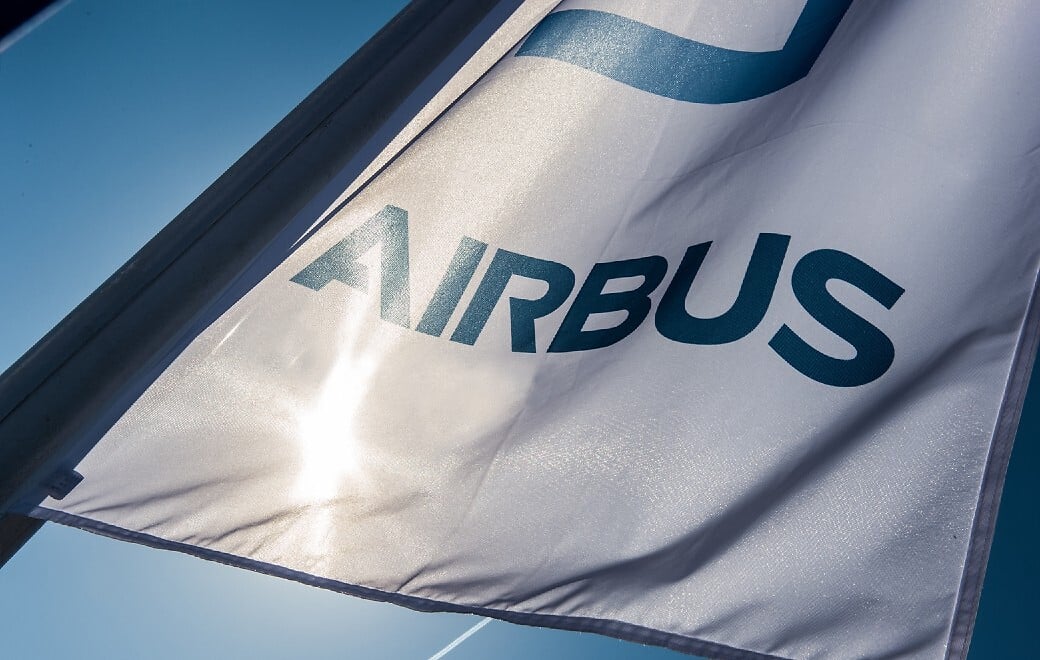Aviation
Airbus completes assembly of first future wing prototype.

A first full-size wing prototype, or “demonstrator,” has been successfully delivered by Airbus’ international R&T programme and Wing of Tomorrow, which will help in the maturation of next-generation wing technology.
The first of three fully composite wing demonstrations is now complete, marking the integration of more than 100 different manufacturing and component technologies, including a brand-new industrial assembly system that has helped confirm important automation targets.
The international team behind this UK-led programme is developing high-performing wing technologies, including the incorporation of a folding wing tip. Alongside research into sustainable aviation fuels and hydrogen propulsion, Wing of Tomorrow shows how Airbus is contributing to aviation’s decarbonisation ambitions and demonstrates the importance of large-scale industry collaboration in achieving our sector’s agenda for a more sustainable future.
The new build philosophy on Wing of Tomorrow eradicates in-tank working and enables manual and automated assembly to be smoothly integrated into an optimised industrial system. Through capturing the learning from building this first, and subsequent, wing demonstrators, Airbus will explore different scenarios to be able to make the right industrial choices to build our wings of the future.
Wing of Tomorrow composite components are designed to make the best use of technologies and reduce the amount of work during the assembly phase by more than 50%. Automation of the remaining drilling, achieving good tolerance control and wing shape, as well as the introduction of new approaches to inspection and validation will support Airbus’ ambition to create the most highly efficient wings of the future.

Aviation
COMAC Unveils Plans for the C929 to Rival Airbus and Boeing

After the success of China’s first C919 aircraft, the country is setting its sights on developing a larger plane. COMAC (Commercial Aircraft Corporation of China) has officially confirmed plans to build a widebody aircraft, marking a significant step in its aircraft lineup.
Traditionally, Airbus and Boeing dominate the widebody aircraft market, with decades of expertise in developing planes and engines capable of carrying heavy payloads. China, which currently relies on imported engines, is now aiming to challenge these giants with its own widebody jet, the C929, designed to compete with the Airbus A350 and Boeing 777.
American Airlines Is Looking for Flight Attendants: Apply Now
The C929 will be China’s first independently developed long-range widebody aircraft. It adheres to international airworthiness standards and boasts independent intellectual property rights. The baseline version is designed to seat 280 passengers and offers a range of 12,000 kilometers, catering to global demand for both regional and international air travel.
Russia, which also needs reliable narrowbody and widebody aircraft, could become a key customer for the C929. Additionally, China plans to target the broader Asian market as it continues to expand its aviation capabilities.
Close Call at Heathrow: BA Flight Narrowly Escapes Drone Collision
China’s aviation progress includes the ARJ21 (now called C909), a regional jet with 100 seats for shorter routes, and the C919, a narrowbody jet with 180 seats designed to rival the Boeing 737 MAX and Airbus A320. Both models have found increasing demand in the domestic market.
At China’s largest air show in Zhuhai, COMAC announced that Air China will be the launch customer for the C929 widebody jet, though details about order size and delivery timelines were not disclosed.
Other major deals announced by COMAC include:
- Hainan Airlines: Firm orders for 60 C919 and 40 C909 regional jets.
- Colorful Guizhou Airlines: 30 C909 jets, with 20 firm orders and 10 provisional agreements.
The C929, renamed from the CR929 after Russia withdrew from the joint development project in 2023, is expected to carry 280–400 passengers with a range of 12,000 kilometers, competing directly with Boeing’s 787 Dreamliner.
According to COMAC’s deputy general manager, Tong Yu, the first fuselage section of the C929 is expected by September 2027, with prototype test flights anticipated soon after.
-

 Aviation2 months ago
Aviation2 months agoMicrosoft Flight Simulator Raises $3 Million to Bring Back the An-225 Mriya
-

 Airlines2 months ago
Airlines2 months agoQantas Engineers Stage Walkout Over Cost of Living Concerns
-

 Airlines2 months ago
Airlines2 months agoQatar Citizens Can Travel to the United States Without a Visa
-

 Aviation2 months ago
Aviation2 months agoQatar Airways bans these new Electronic Devices on plane
-

 Airlines2 months ago
Airlines2 months agoJapan Airlines Rolls Out Free Domestic Flights to International Passengers
-

 Defence2 months ago
Defence2 months agoWhich Country Has the Largest Fleet of Fighter Aircraft?
-

 Airport2 months ago
Airport2 months agoWestern Sydney Airport Welcomes Its First Plane After 6 Years of construction
-

 Aviation2 months ago
Aviation2 months agoDid you know ? Once Boeing 747 carried 1088 passenger in 1991








